6 The Stelae Calligraphy Style in the Northern and Southern Dynasties
Part I. Culture
The Northern and Southern Dynasties (南北朝/nán běi cháo) (420-589) follow the Wei and Jin periods. It was during this era that northerners began to adopt regular script as it developed from clerical script. Most noteworthy is that this type of script started to appear as engravings on stelae, upright stone columns or slabs. (Meanwhile, Wang Xizhi’s running style remained popular in the south).
Besides columns and slabs, the engravings were inscribed on tablets, monuments on cliffs, and epitaphs. Written during the Wei, these engravings are said to reflect what is now known as the Wei Stelae Style (魏碑体/魏碑體/wèi bēi tĭ). As a transitional style, this calligraphy style borrows from both clerical and regular characteristics. Characters are moderately flat and wide (less so than the clerical style) but appear tall (similar to regular style). Another feature is its series of angular strokes (方笔/方筆/fāng bĭ). Figure 1 shows several famous ones. For information, visit Read China 读中国.
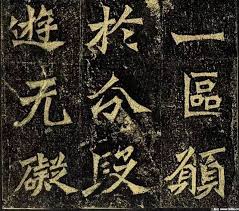 |
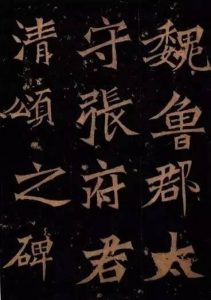 |
Figure 1: Wei Stelae calligraphy rubbings
*
Part II. Calligraphy Writing
1 Brush Techniques: 提笔/提筆 and 顿笔/頓筆
提笔/提筆/tí bĭ and 顿笔/頓筆/dùn bĭ are typically used for stroke ending and turning. Unlike 提 in Chapter 3, 提笔/提筆 is a quick-lifting brush movement; also 顿笔/頓筆 is a quick press-down movement to make a part of a stroke. (Note: 点/點/diăn illustrated with the second picture in Figure 2. A pause must follow 顿笔/頓筆 – to make it possible to change writing direction quickly.)
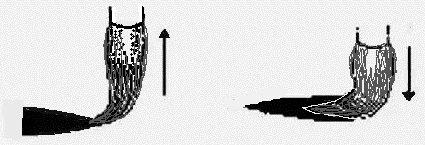
2 Stroke Writing
As described in Chapter 5, hooks (钩/鈎) can end up being pointed to both right and left sides. Figure 3 lists four types of rightward hooks. Technically, the last stroke in Figure 3 is not a hook. Rather it is a rising stroke. But the stroke and the stroke coming earlier in stroke order are often written as one stroke. For example, there is no break between these two strokes, so it is included in the hook category.
Like the leftward hooks, the rightward hooks are accomplished with a sudden change of brush direction followed by a swift pointed end. Again, the correct way of writing hooks, in general, is to follow these steps: first, pause at the turning point; change writing direction; and then make the triangular-like hook end.
 |
 |
 |
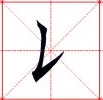 |
 |
Figure 3: Rightward hooks
3 Characters
3.1 Stroke Order
Arch Chinese lists 12 rules of Chinese character writing order. Below are Rules 10 and 11:
Rule 10: Outside before inside (e.g., 凡)
Rule 11: Inside or upper-right dots last (凡 and 成)
For details, visit the Arch Chinese website. Yellowbridge Online Dictionary can also provide additional information.
3.2 Characters
化/huà: to change; 心/xīn: heart; 成/chéng: to succeed; 凡/fán, all; 切/qiē, to cut/qiè, anxious
3.3 Sample characters
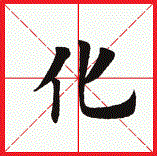 |
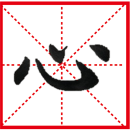 |
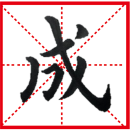 |
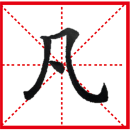 |
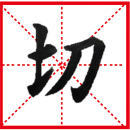 |
3.4 Writing
- Prepare tools and materials.
- Start to write following instructions.
- Be aware of proper rules for posture and of stroke order.
4 Homework
4.1 Characters for practice:
光 guāng: light/exhausted; 必 bì: heart; 戒 jiè: to abandon; 气 qì, air; 衣 yī, clothes

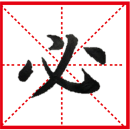
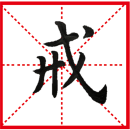
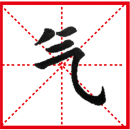
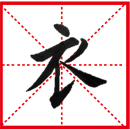
4.2 Search online to answer why Wei Stelae Style is still popular today in China.
*
Part III. Additional Resources
- Calligraphy in the Six Dynasty Period: https://depts.washington.edu/chinaciv/callig/7calsixd.htm

